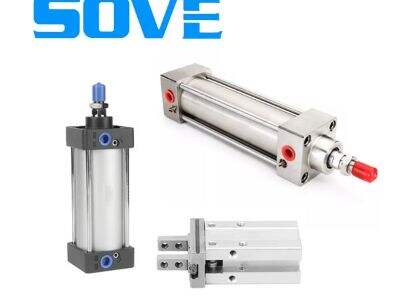These devices are quite essential for motion and one such part is pneumatic actuators. They are machine and tool functions that allow them to get the work done. So, just like we need to go through a check-up process to ensure we remain healthy, the pneumatic actuators also require regular checks and adjustments to perform seamlessly. In this article, we’ll learn why it’s important to verify and calibrate these actuators and a step by step guide on how do it.
Importance of Checking and Adjusting Pneumatic Actuators
This sort of actuators are found in numerous locations, e.g. factories and robots. They aid in transferring components, regulating valves, and perform functions that must be done with precision. Pneumatic actuators require frequent inspection and adjustment to ensure proper functioning. Using checking to locate issues and adjust to ensure they are applying the correct pressure and pace. We can keep things from going wrong, make them work better, and help them last by checking and adjusting pneumatic actuators.
How to check pneumatic actuators, step by step
Inspect actuators: Check for damage, leaks, or wear in the actuators. Ensure all connections are snug and clean.
Check the air supply: Ensure that the air traveling to the actuators is properly pressurized and clear. Measure the pressure with a pressure gauge.
Actuator movement testing: Power on actuators and observe how they move. You do know they should not stop or shake while moving. Listen for unusual sounds.
Measurement of the movement distance: Using ruler or measuring tape, check the range of motion of the Pneumatic actuator. It helps you guide and verify whether it is traveling as far as needed.
Document What You Find: Note what you tested and any issues you observed. This allows you to monitor the performance of the actuators over time.
Tools You Need to Adjust Pneumatic Actuators
Pressure Gauge: Measures the air pressure for the actuators.
Ruler or measuring tape: This will be used to measure how much the Pneumatic actuator cylinder move.
Cleaning tools: These tools ensure no dirt is available on actuators.
Lubrication oil: This maintains the fluidity of the moving parts.
Common Problems to Look For
Leaks: Inspect the air lines or actuators for any leaks that could be causing issues.
Obstructions: Ensure there are no objects obstructing the actuators which prevent it from moving.
Wear and tear: Check for damage, such as rust or broken seals, that can lead to problems.
Incorrect adjustments: Check that the actuators are calibrated to the correct pressure and speed.
Test regularly: Regularly test the actuators in order to identify issues at an early stage.
Plan maintenance: Establish a cadence to clean, lubricate, and reconcile the actuators as necessary.
Log it: If you proactively document all tests and maintenance, you will know how the Econ pneumatic actuator are performing.
Train the workers: Educate civilians on how to operate and maintain the actuators to prevent damage.
Seek help: If you have major issues, seek out a professional for help.


